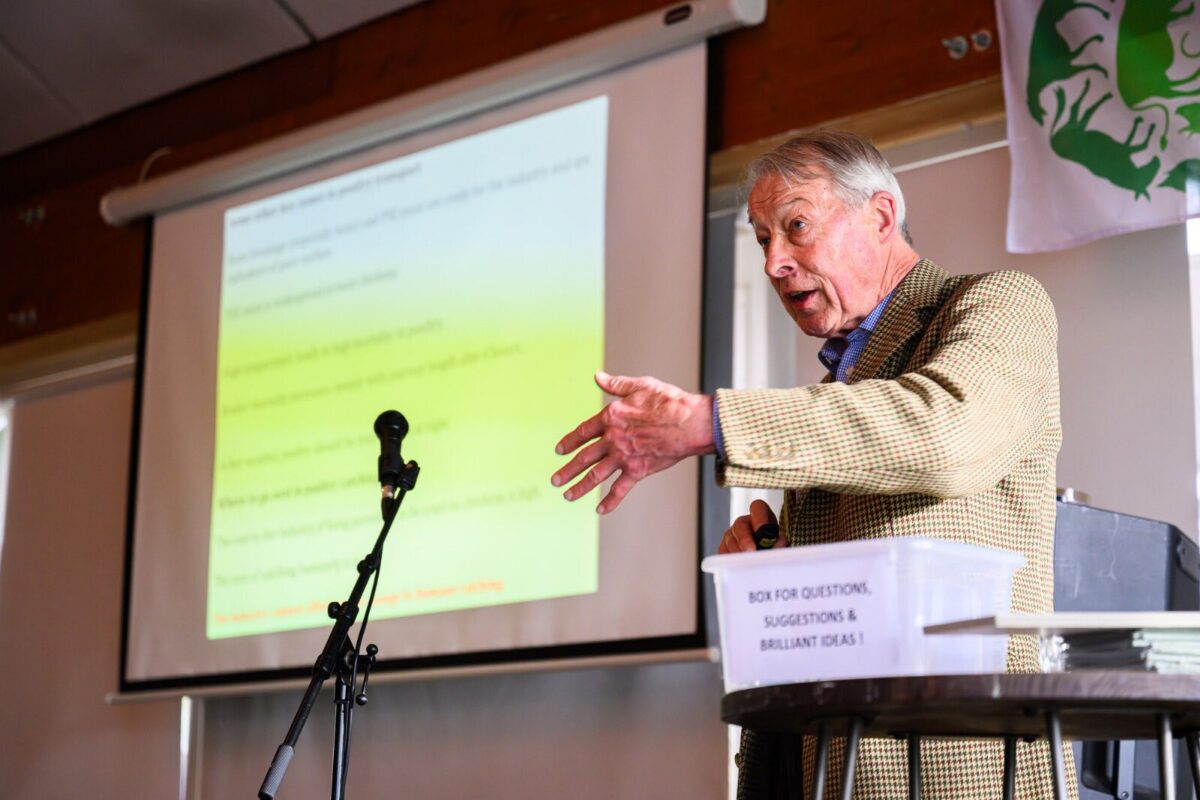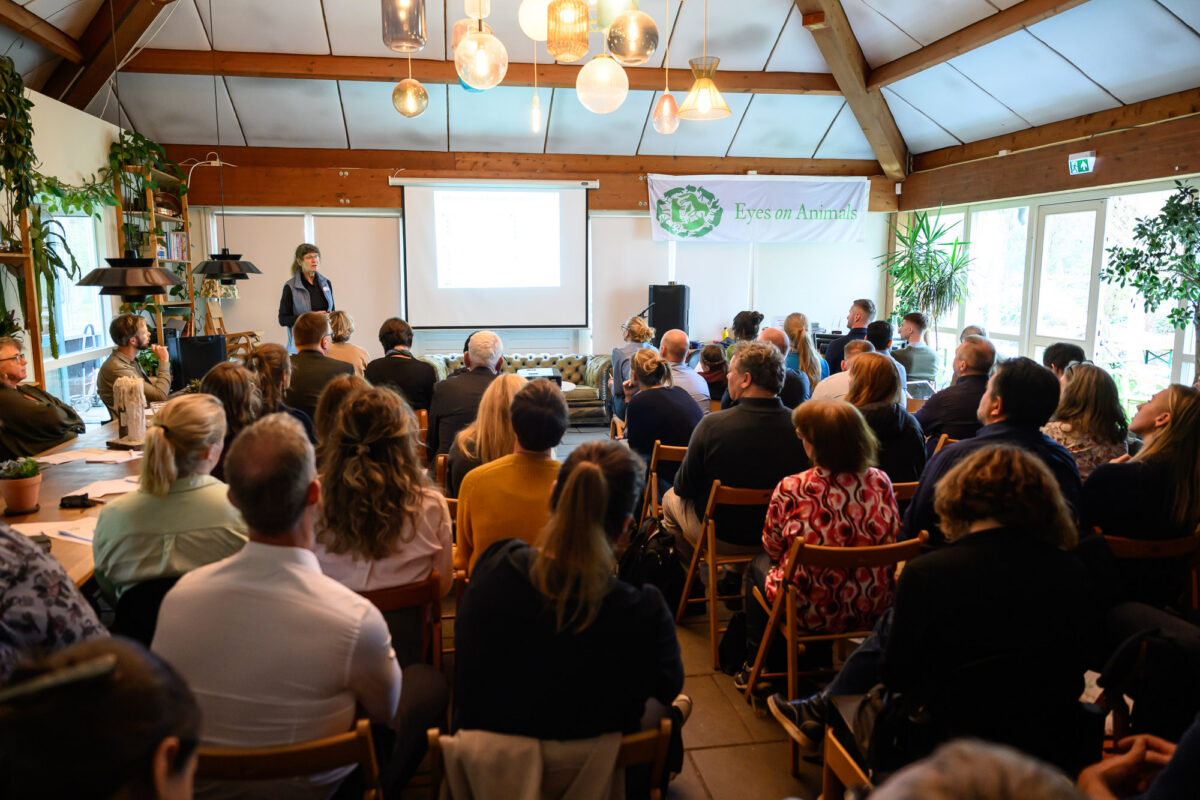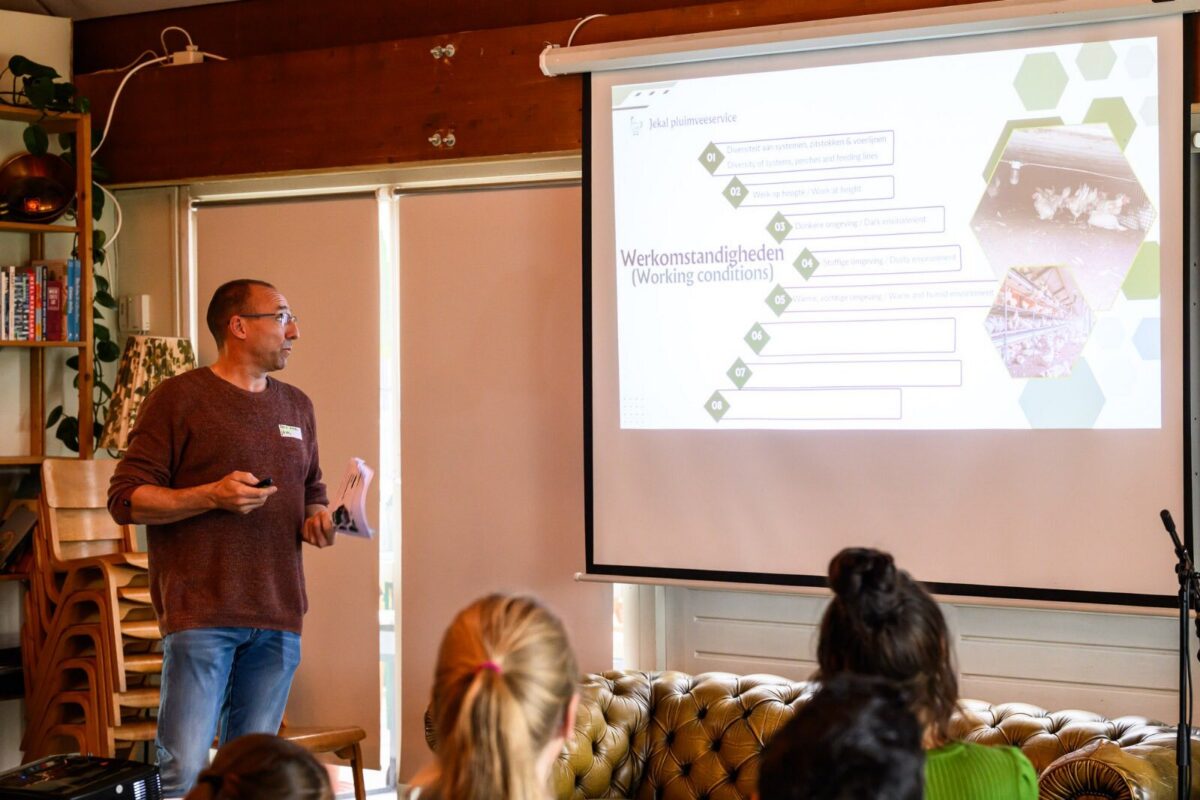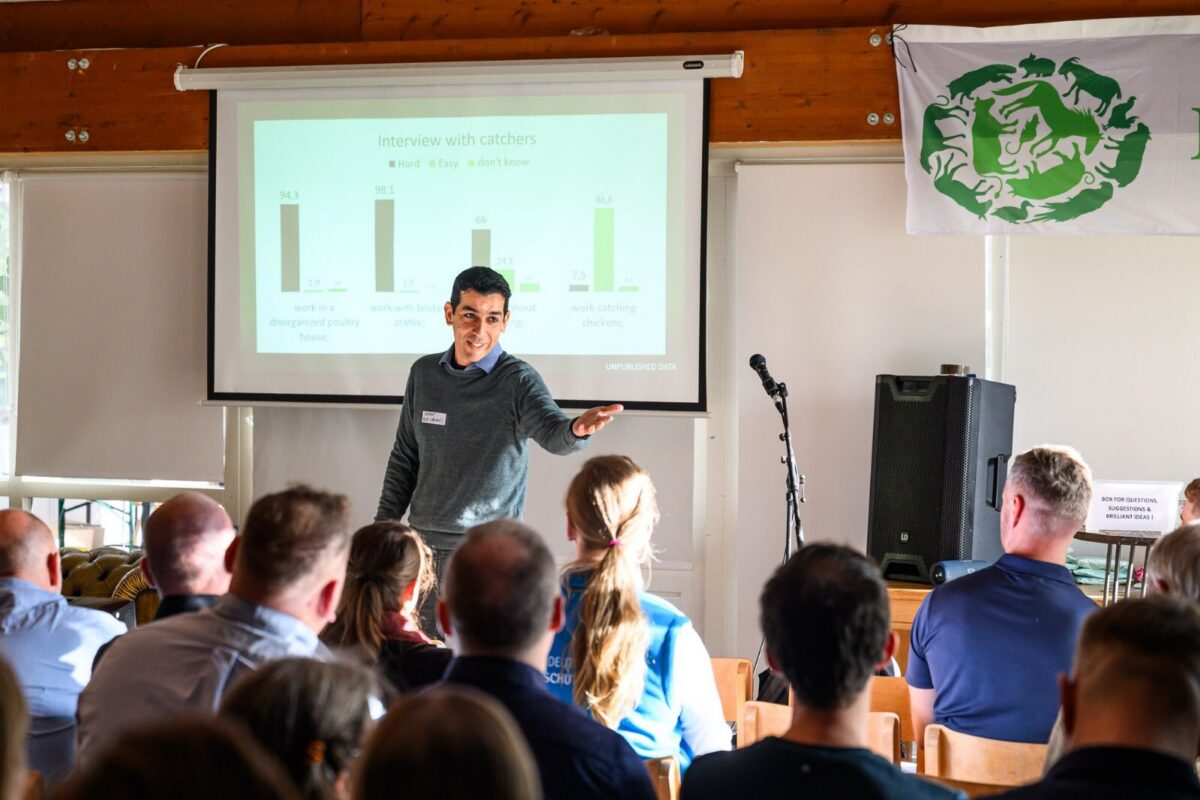Today, Eyes on Animals hosted the first international conference dedicated to poultry catching and loading, held in Leiden, the Netherlands. About 80 representatives from over nine countries attended, including catching teams from the United Kingdom, Germany, and the Netherlands; engineers specializing in poultry transport containers and barn design from Italy and Poland; and researchers and consultants from Denmark, Scotland, and Brazil.
All key stakeholders involved in making poultry catching and loading more humane were present. Among the speakers were Victor Lima from Brazil – where most broilers are caught upright – Professor Donald Broom, a pioneer in the field of upright catching, and Peter Knapen, owner of the Dutch catching company Jekal. Along with several other experts (see the agenda below), they shared their insights, hands-on experience, and innovative ideas.
Key messages of the day included:
- Catching needs to be calmer and less rushed to prevent injuries. It’s not just about the technique (upright or by the legs, upside down); the pressure from slaughterhouses and transport companies to “catch at high speed” must be drastically reduced.
- The process needs modernization – to protect both animals and workers. How is it that we can automate egg and manure removal, yet still have people climbing up high or crawling on dirty floors to manually catch hens by their legs?
- The design of the poultry transport containers and aviary systems urgently need improvement – such as increased headspace in transport modules to prevent wing damage and fewer obstacles in aviaries that hens can bump into when being caught.
- More research is needed to better trace injuries and mortality caused by rough handling during catching. Studies tracing origin of injuries on pigs offer useful insights that could be applicable also for poultry, and technologies like artificial intelligence and monitoring of liver ruptures (often caused by poor handling during catching) also show promise.
- Current official chicken-catcher training programs need to be updated: they must become more practical, interactive, and delivered in the catchers’ native language. More recognition and appreciation for poultry catchers is essential.
- Reducing stress and injury should be rewarded – for example, by paying a price premium per bird to the more-gentle catchers.
- More careful handling – including upright catching – offers significant financial potential that is still underexplored such as less trim loss, better meat quality, and lower mortality upon arrival. Rough catching not only causes injuries but can also lead to reputational damage.
- Responsibility must be shared – all players in the chain must take responsibility and collaborate, rather than point fingers.
The conference was a great success: practical, inspiring, and full of fresh ideas. A follow-up smaller meeting will be organized to bring design experts and practitioners together to develop concrete solutions.
A special thank you goes to the Barth-Misset Fund for their financial support – without them, this conference would not have been possible.









